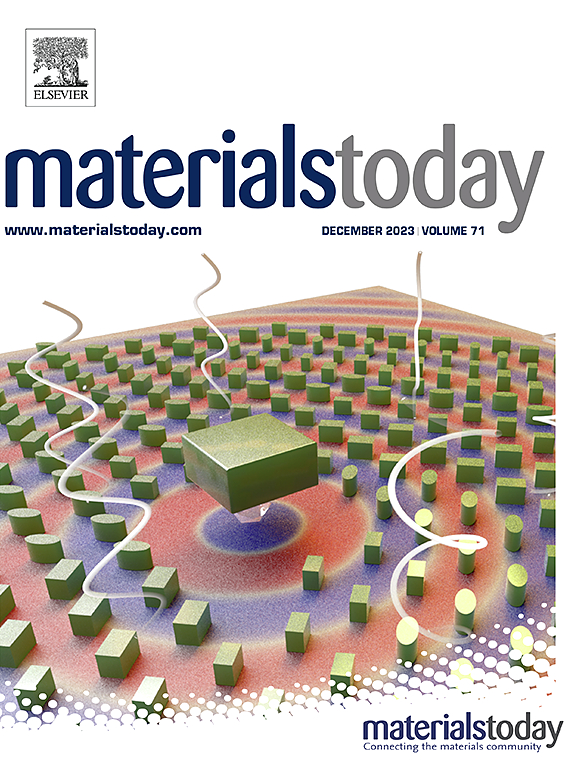通过表面强化和体掺杂实现高电压稳定LiCoO2
IF 21.1
1区 材料科学
Q1 MATERIALS SCIENCE, MULTIDISCIPLINARY
引用次数: 0
摘要
将LiCoO2 (LCO)的工作电压提高到4.45 V以上,可显著提高可充电锂离子电池的能量密度;然而,它也会加剧界面反应,诱导相变,促进表面氧的损失,导致容量的快速衰减。在这里,我们提出了一种强大的策略,通过湿化学方法集成表面和体修饰来实现4.6 V以上的LCO阴极的稳定循环,该策略在LCO颗粒周围形成保形Ni3(PO4)2纳米壳;随后的热处理诱导Ni2+掺杂到本体中,表面PO43-修饰,形成薄的岩盐相和Li3PO4保护层。这些修饰减轻了不可逆相变和寄生反应,从而显著提高了稳定性;在半电池中,在1C条件下,在4.6 V下循环100次后,改性LCO的容量保留率为98.2%(在4.7 V下为88.1%),在4.6 V LCO/石墨全电池中循环346次后,保留率达到80%。这项工作强调了集成晶格和表面工程在推进层状氧化物阴极中的关键作用,并为开发高能量密度锂离子电池提供了有价值的见解。本文章由计算机程序翻译,如有差异,请以英文原文为准。
High voltage stable LiCoO2 enabled by surface strengthening and bulk doping
Enhancing the operating voltage of LiCoO2 (LCO) beyond 4.45 V significantly enhances the energy density of rechargeable Li-ion batteries; however, it also intensifies interfacial reactions, induces phase transitions, and promotes surface oxygen loss, leading to fast capacity decay. Here, we present a robust strategy to achieve stable cycling of LCO cathode above 4.6 V by integrating surface and bulk modifications through a wet chemical approach, which forms a conformal Ni3(PO4)2 nanoshell around LCO particles; the subsequent heat treatment induces Ni2+ doping into the bulk and PO43- modification on the surface, resulting in a thin rock-salt-like phase and a protective Li3PO4 layer. These modifications mitigate irreversible phase transitions and parasitic reactions, resulting in significantly improved stability; the modified LCO demonstrates 98.2 % capacity retention at 4.6 V (88.1 % at 4.7 V) after 100 cycles at 1C in half-cells and achieves 80 % retention over 346 cycles in 4.6 V LCO/graphite full cell. This work highlights the critical role of integrated lattice and surface engineering in advancing layered oxide cathodes and provides valuable insights for developing high-energy–density Li-ion batteries.
求助全文
通过发布文献求助,成功后即可免费获取论文全文。
去求助
来源期刊

Materials Today
工程技术-材料科学:综合
CiteScore
36.30
自引率
1.20%
发文量
237
审稿时长
23 days
期刊介绍:
Materials Today is the leading journal in the Materials Today family, focusing on the latest and most impactful work in the materials science community. With a reputation for excellence in news and reviews, the journal has now expanded its coverage to include original research and aims to be at the forefront of the field.
We welcome comprehensive articles, short communications, and review articles from established leaders in the rapidly evolving fields of materials science and related disciplines. We strive to provide authors with rigorous peer review, fast publication, and maximum exposure for their work. While we only accept the most significant manuscripts, our speedy evaluation process ensures that there are no unnecessary publication delays.
 求助内容:
求助内容: 应助结果提醒方式:
应助结果提醒方式:


